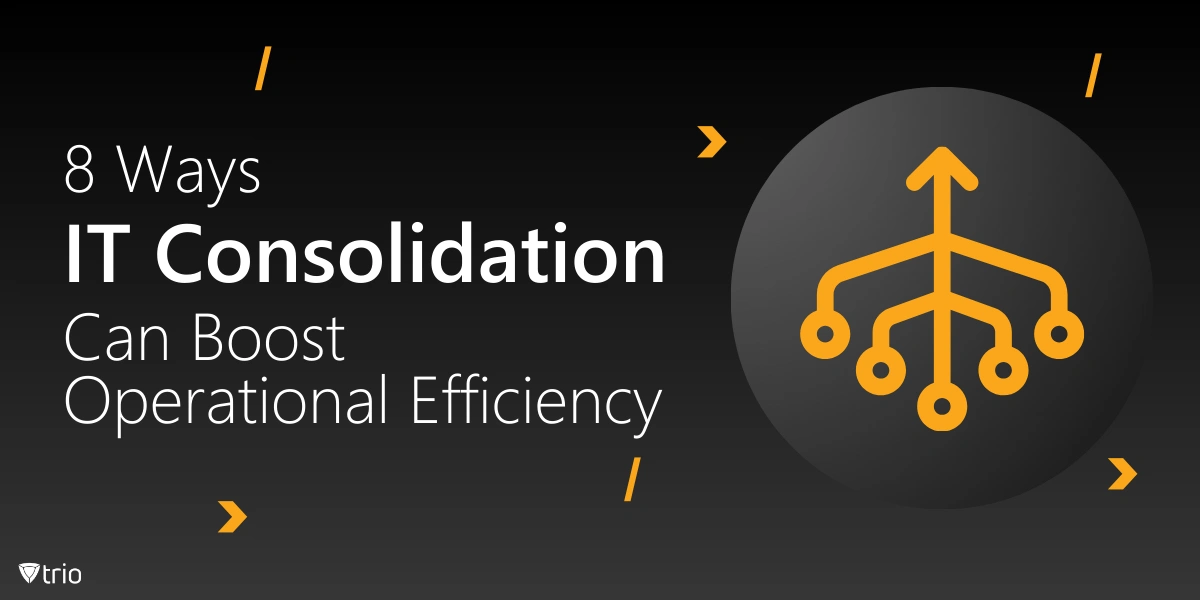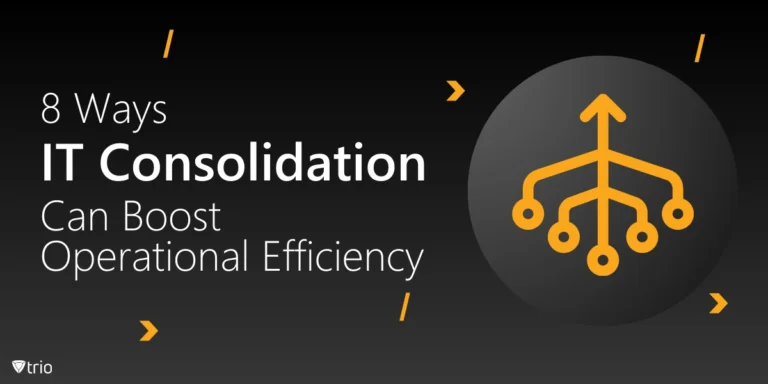In today’s fast-paced digital landscape, organizations are under pressure to streamline their IT operations to remain competitive. One of the most effective ways to achieve this is through IT consolidation. IT consolidation involves the process of integrating various IT systems, resources, and infrastructures into a more manageable, efficient, and cost-effective environment. A great IT consolidation strategy not only simplifies operations but also plays a significant role in improving security, increasing scalability, and reducing operational costs.
The importance of IT consolidation cannot be overstated, especially as businesses face the growing challenges of managing disparate technologies and infrastructures. By consolidating their IT systems, organizations can eliminate inefficiencies, reduce redundancies, and optimize performance across their entire IT ecosystem. This enables IT teams to focus on more strategic objectives rather than day-to-day operational issues, ultimately boosting productivity and ensuring that the organization is ready to meet future demands.
IT Consolidation and Strategic Advantages
IT consolidation is the process of streamlining and integrating an organization’s IT infrastructure, resources, and systems to reduce complexity, improve efficiency, and lower costs. This process typically involves merging data centers, unifying software applications, consolidating servers, and adopting cloud-based solutions to create a more manageable and scalable IT environment. By reducing redundant systems and centralizing operations, IT consolidation enables businesses to operate more smoothly and cost-effectively while improving overall security and resource allocation.
One of the main reasons IT consolidation matters is that it helps organizations eliminate inefficiencies and leads to better IT asset management. Many businesses operate with outdated, disparate systems that require excessive maintenance and manual intervention, leading to wasted time and resources. By consolidating IT resources, businesses can optimize performance, reduce downtime, and streamline management processes, allowing IT teams to focus on strategic initiatives rather than troubleshooting multiple systems.
Security is another critical aspect of IT consolidation. Managing multiple decentralized IT environments increases the risk of security vulnerabilities, as different systems may have inconsistent security measures and outdated software. Consolidation helps organizations enforce standardized security policies, ensuring that data is protected and compliance requirements are met across the entire infrastructure. This approach minimizes the risks associated with cyber threats, data breaches, and unauthorized access.
Moreover, IT consolidation plays a crucial role in supporting business growth and scalability. As organizations expand, they need an IT infrastructure that can adapt to increased demands without excessive costs. A well-implemented consolidation strategy allows businesses to scale operations seamlessly, ensuring they can handle higher workloads, integrate new technologies, and remain competitive in a fast-evolving digital landscape.
8 Best Practices to Boost IT Consolidation Operational Efficiency
Here are the 8 ways we suggest to boost IT consolidation operational efficiency along with IT consolidation strategy examples.
1. Centralized Management Simplifies Operations
Managing multiple systems and platforms can be a logistical nightmare. IT consolidation allows you to centralize management, bringing all your IT consolidation strategy tools and processes under one umbrella. This reduces complexity and ensures that your team can monitor and control everything from a single dashboard.
Centralized management also minimizes the risk of errors caused by juggling multiple interfaces. With a unified system, updates, patches, and configurations can be rolled out seamlessly across the organization. This not only saves time but also ensures consistency and compliance.
Moreover, centralized management provides better visibility into your IT infrastructure. You can quickly identify bottlenecks, troubleshoot issues, and allocate resources more effectively. This level of oversight is crucial for maintaining operational efficiency in a dynamic environment.
By consolidating your IT management, you empower your team to focus on strategic initiatives rather than getting bogged down by administrative tasks. It’s a win-win for both productivity and morale.
2. Reduced Costs Through Streamlined Resources
IT consolidation is a proven way to cut costs without compromising on performance. By eliminating redundant tools and systems, you can reduce licensing fees, maintenance costs, and hardware expenses. This frees up budget for more critical investments.
Consolidation also reduces the need for specialized training. When your team works with a unified system, they only need to master one set of tools, which lowers onboarding time and training costs. This is especially beneficial for organizations with high turnover rates.
Additionally, streamlined resources lead to lower energy consumption and reduced physical space requirements. Fewer servers and devices mean less power usage and a smaller data center footprint, contributing to both cost savings and sustainability goals.
By optimizing your IT resources, you can achieve significant cost efficiencies while maintaining or even improving service quality. It’s a smart way to do more with less.
3. Enhanced Security and Compliance
A fragmented IT environment is a security risk. Multiple systems create multiple entry points for cyber threats, making it harder to monitor and protect your infrastructure. IT consolidation strengthens your security posture by reducing vulnerabilities.
With a consolidated system, you can implement uniform security policies and protocols across the organization. This ensures that all devices, applications, and data are protected by the same high standards, minimizing the risk of breaches.
Consolidation also simplifies compliance management. By centralizing data storage and access controls, you can more easily demonstrate compliance with industry regulations and standards. This reduces the risk of costly fines and reputational damage.
In an era where cyber threats are constantly evolving, IT consolidation provides a robust foundation for safeguarding your organization’s digital assets. It’s a proactive approach to security that pays dividends in the long run.
4. Improved Collaboration and Communication
Siloed systems can hinder collaboration and communication within your IT team and across the organization. IT consolidation breaks down these barriers by creating a unified platform where information flows seamlessly.
With consolidated tools, team members can access the same data and resources in real time, regardless of their location. This fosters better IT collaboration and ensures that everyone is on the same page, reducing misunderstandings and delays.
Consolidation also enables integrated communication tools, such as instant messaging, video conferencing, and file sharing. These tools make it easier for teams to work together, even in remote or hybrid environments.
By promoting collaboration and communication, IT consolidation helps your team operate more efficiently and deliver better results. It’s a key driver of organizational success in today’s interconnected world.

5. Faster Problem Resolution
When IT systems are fragmented, troubleshooting issues can be a time-consuming process. IT consolidation simplifies problem resolution by providing a centralized view of your infrastructure. This allows your team to quickly identify and address issues before they escalate.
With consolidated tools, you can also automate IT processes and routine tasks, such as monitoring and alerts. This reduces the workload on your IT staff and ensures that potential problems are detected and resolved proactively.
Additionally, consolidation enables better data analysis. By aggregating data from multiple sources, you can gain deeper insights into system performance and user behavior. This helps you identify root causes and implement long-term solutions.
Faster problem resolution not only improves operational efficiency but also enhances user satisfaction. It’s a critical benefit of IT consolidation that can’t be overlooked.
6. Scalability for Future Growth
As your organization grows, so do your IT needs. A consolidated IT environment is inherently more scalable, allowing you to expand your infrastructure without adding unnecessary complexity.
With a unified system, you can easily add new users, devices, and applications as needed. This flexibility ensures that your IT operations can keep pace with your business goals, whether you’re opening new offices or launching new products.
Consolidation also simplifies the integration of emerging technologies. Whether it’s AI, IoT, or cloud computing, a consolidated infrastructure provides a solid foundation for innovation and growth.
By future-proofing your IT operations, consolidation ensures that your organization is ready to seize new opportunities and overcome new challenges. It’s an investment in long-term success.
7. Improved User Experience
A fragmented IT environment can frustrate users and hinder productivity. IT consolidation creates a more seamless and intuitive experience by providing a consistent interface and unified access to resources.
With consolidated tools, users no longer need to switch between multiple applications or remember different login credentials. This simplifies their workflow and allows them to focus on their core tasks.
Consolidation also enables personalized experiences. By centralizing user data, you can tailor services and support to individual needs, enhancing satisfaction and engagement.
A better user experience translates to higher productivity and lower turnover. It’s a key benefit of IT consolidation that directly impacts your bottom line.
8. Data-Driven Decision Making
In today’s data-driven world, having access to accurate and timely information is crucial. IT consolidation enables better data management by centralizing storage and analysis.
With a unified system, you can aggregate data from multiple sources and generate comprehensive reports. This provides valuable insights into operational performance, user behavior, and market trends.
Consolidation also supports advanced analytics and machine learning. By leveraging these technologies, you can uncover hidden patterns and make more informed decisions.
Data-driven decision making is a competitive advantage in any industry. IT consolidation empowers your organization to harness the full potential of your data and stay ahead of the curve.
See Trio in Action: Get Your Free Trial Now!
Conclusion
IT consolidation is a powerful strategy for boosting operational efficiency and driving organizational success. By centralizing management, reducing costs, enhancing security, and improving collaboration, consolidation helps your IT team work smarter and deliver better results.
Ready to take your IT operations to the next level? Explore Trio, a cutting-edge Mobile Device Management solution designed to simplify device management, enhance security, and boost productivity. With Trio, you can consolidate your IT operations and unlock new levels of efficiency. Try out Trio’s free trial today!




